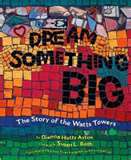 Hip, hip, hooray for April Pulley Sayre and Go, Go, Grapes! A Fruit Chant! How do you make healthy eating fun? With Sayre’s vibrant photos of fruits taken at her local farmer’s market paired with her contagious rhymes:
Hip, hip, hooray for April Pulley Sayre and Go, Go, Grapes! A Fruit Chant! How do you make healthy eating fun? With Sayre’s vibrant photos of fruits taken at her local farmer’s market paired with her contagious rhymes:
“Nectarines, tangerines,
hit the spot.
Glum? Go plum.
Or apricot!”
Start your lesson by asking students, “What do you think a mangosteen is? Or a pomegranate?” Read Go, Go Grapes! and see if your kids can discover what those uncommon words mean. Reread the book and encourage kids to chime in (“Fruit is fun!”) Next, play “Cross the Line”: have all the kids stand on one side of the classroom and imagine an invisible line down the middle of the room – or put down tape if your maintenance team won’t go bananas. Say “Cross the line if you’ve tried kiwi,” and go through the fruits listed in the book. If you have time and funds, bring in some fruits for kids to try! (Check for fruit allergies first – some kids are allergic to certain berries.) Take photos of the fruits and have kids use those Logic Smarts to sort the photos – by color, or by which they liked and which they didn’t. With all the gorgeous colors of fresh produce, you can make a “color wheel” using fruits – challenge kids to eat a rainbow! Go, Go, Grapes, hooray for healthy eating, and super job, Ms. Sayre!
For more information, visit aprilsayre.com.





